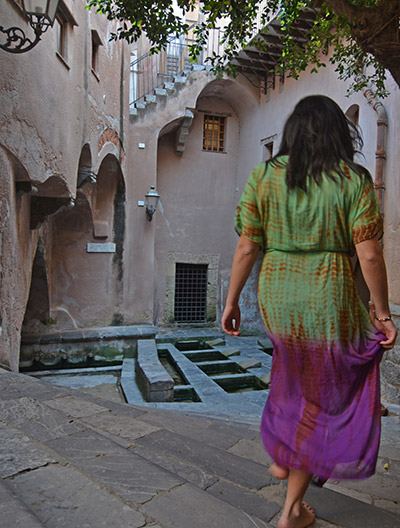ART AND CULTURE
Cefalù a concentration of history and beauty
"Emblematically imbued with Arab and Norman qualities" (as described by Vincenzo Consolo), it has a very characteristic historic centre, with a stand-out Cathedral, a magnificent monument of the Siculo-Norman art
A concentration of history and beauty. Suspended between the Tyrrhenian sea and the Madonie mountains, Cefalù (a UNESCO world heritage site) is dominated by the imposing profile of La Rocca. It is one of the most evocative and mysterious corners of Sicily, but also one of the most beautiful villages of Italy, with its succession of alleys and medieval streets.
“Emblematically imbued with Arab and Norman qualities” (as described by Vincenzo Consolo), it has a very characteristic historic centre, with a stand-out Cathedral with two soaring towers, a magnificent monument of the Siculo-Norman art, founded in 1131 by Roger II of Sicily. Just like a treasure chest, it jealously guards the mosaics of Christ Pantocrator Blessing (1148) in the central apse, the Romanesque baptismal source, the double-sided wooden cross painted by Guglielmo da Pesaro and the Madonna with the Child (1533) by Antonello Gagini. Adjoining the Cathedral is the Cloister, the medieval wash-house of Cefalù, decorated with twin columns and sculpted capitals. 
A visit to Osterio Magno, a monumental complex of the 13th century, the former summer residence of the Ventimiglia family, is a must, as well as to the medieval wash-house, entirely carved into the rock at the mouth of river Cefalino, and to the recently renovated Teatro Cicero. A walk along Corso Ruggero will allow the visitor to admire different architectural monuments, from the Chiesa del Purgatorio (1668), inside which lie the remains of Baron Enrico Piraino di Mandralisca, or the façade of the Chiesa dell’Addolorata in Piazza Garibaldi, whose bell tower holds the remains of city’s ancient megalithic walls at its base.
The Mandralisca Museum is like an art book, containing works ranging from the VI century BC to the 1600s. A visit (but not a fleeting one) will give the visitor an opportunity to appreciate the different sections, such as that of malacology, the historical library, the art gallery that houses icons of the Cretan Byzantine School, painted in the XVII century, but what attracts most people with its beauty and reputation, is the famous portrait of Unknown man, attributed to Antonello da Messina and the rediscovered masterpiece of Sogliani, as well as the archaeological section, which houses the famous bell krater. Within a short walk, you can reach the top of La Rocca, looming over the city, from where you can admire a breath-taking view of the Tyrrhenian sea and visit the temple of Diana, a megalithic structure connected to the cult of water, or look for the traces of the prehistoric city of Ruggero in the two caves, called “delle Giumente” and “delle Colombe” (the Cave of the Mares and the Cave of the Doves), located on the northern side of La Rocca. 15 kilometres away from the town, between chestnuts, oaks, and ash trees, stands the Santuario di Gibilmanna: inside the ancient convent, there is a rich library and the Museo di Arte Sacra.








